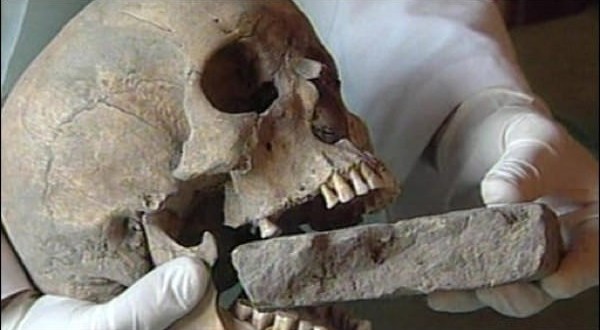Archaeologists in Poland say they have discovered a skeleton with a brick stuck into the mouth — evidence that the subject was believed to be a vampire.
Dated to the 16th-17th century, the grave was unearthed during excavations in the town of Kamien Pomorski, in northwestern Poland, the Kamienskie.info website reported.
In addition to the brick, which was wedged so violently into the mouth to knock out the upper teeth, the skeleton featured a leg with a hole likely made from a puncture. This would suggest the leg had been staked to the ground to prevent the individual from rising from its grave.
According to a professor for the School of Slavonic and Eastern European Studies at University College London, Titus Hjelm, “Specific to Polish vampires is that they are known for eating their own flesh and burial garments when they rise from the dead.” This could explain the stone in the mouth and teeth-removal.
Hjelm said the Polish believed vampires were born, rather than made, further stigmatizing the vampire legends.
However, others have not been so easily swayed and believe these unconventional burial techniques are nothing more than criminal graves, designed to punish wrongdoers after death.
Legendary or historic, these mysterious burial sites continue to be uncovered throughout Poland and can be attributed to life and times of medieval Polish belief and rituals of the 16th century.
Agencies/Canadajournal
 Canada Journal – News of the World Articles and videos to bring you the biggest Canadian news stories from across the country every day
Canada Journal – News of the World Articles and videos to bring you the biggest Canadian news stories from across the country every day



